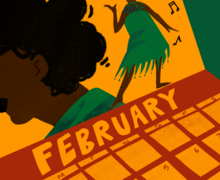SU releases results of survey on sexual assault, harassment
Dan Lyon | Asst. Photo Editor
The data is part of the Survey on Sexual and Relationship Violence, conducted in spring 2018.
About 23% of Syracuse University students who participated in a spring 2018 survey said they have experienced nonconsensual sexual contact since becoming an SU student, according to results released Tuesday.
The data is part of the Survey on Sexual and Relationship Violence, which was sent to a random sample of 2,000 students. A total of 482 students participated, creating a 24% response rate. Students were asked about their attitudes, awareness and experiences relating to sexual and relationship violence.
Those who said they experienced unwanted sexual contact were asked where the incident occurred. Only 111 students responded to the question. About 67 people said the incident had occurred on campus — in a residence hall, campus facility or the house of a Greek life organization. About 60 students said they experienced unwanted sexual contact off campus.
About 45 students said they suspect someone had sexual contact with them while they were unable to provide consent or stop what was happening because they were incapacitated. About 42 students said they were certain sexual contact had occurred under the same circumstances.
Additionally, about 115 students said they had experienced nonconsensual sexual contact before they came to SU.
Of the students who said they were sexually assaulted, 95% did not file a report. The lack of reporting is a trend among other forms of sexual and relationship violence included in the survey. Almost all respondents who said they experienced dating violence, sexual harassment or stalking also said they did not file a report.
About 27% of respondents said they experienced dating violence since they became an SU student. About 32% of respondents — 141 people — said they experienced sexual harassment as an SU student.
The most common form of stalking identified among survey participants — about 107 people — was receiving unsolicited emails, videos or text messages.
The survey also asked students about bystander intervention and defining consent. About 66% of people who said they had witnessed a situation at SU that could lead to a sexual assault indicated that they had asked the person who appeared at risk if they needed help. Of the respondents, 7% said they decided not to take action.
Students were also asked to define “affirmative consent.” More than half of respondents selected the option defining consent as a verbal “yes,” while 42% chose the definition of “a voluntary and mutual decision among all participants to engage in sexual activity.”
The largest category of students affected by sexual assault, harassment, stalking or relationship violence were first-year students. Women were also more likely to complete the survey than men were — 28.8% versus 19%.
Published on April 30, 2019 at 8:24 pm
Contact Casey: casey@dailyorange.com | @caseydarnell_





